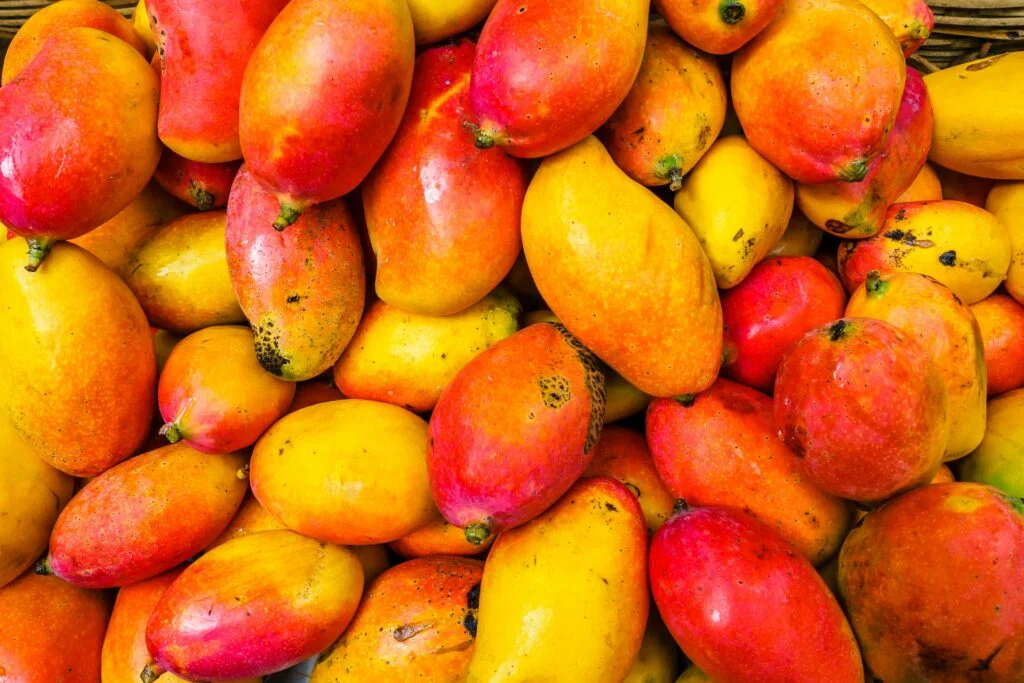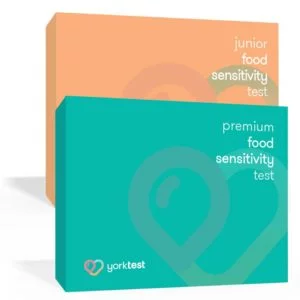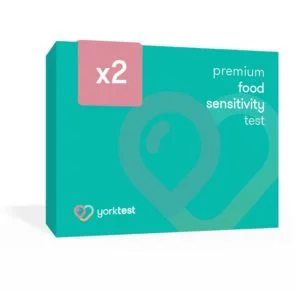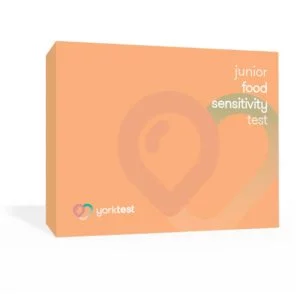Mangoes are a beloved tropical fruit, but unfortunately for some they can trigger potentially serious allergic reactions. In this article, we’ll explore what mango allergy entails, its key symptoms and risk factors, strategies for diagnosis and avoidance, as well as tips for managing this food allergy in daily life.
What is a Mango Allergy?
Mango allergies can be triggered by the body’s immune system reacting to proteins found in mangoes. It is classified as a Type 1 allergy, meaning the body’s defences mistakenly identify mango proteins as harmful, prompting an allergic response.
When someone allergic to mangoes either ingests, touches or inhales mango particles their immune system releases antibodies called Immunoglobulin E (IgE). These IgE antibodies signal the release of inflammatory chemicals like histamine that cause allergic symptoms.Â
Mangoes belong to the same family as cashews, pistachios and poison ivy but a mango allergy is very distinct from poison ivy or nut allergies, since the specific proteins that trigger mango allergies are completely different from those in tree nuts or poison ivy. However, some individuals may experience allergic cross-reactivity (discussed later in this article) if their bodies mistake the mango proteins as similar to allergens in these other plant sources.Â
It’s also important to differentiate mango allergy from Oral Allergy Syndrome (OAS), where undigested mango proteins cross-react with pollen allergens, causing localized oral/throat irritation. OAS reactions are generally milder compared to systemic mango allergies.Â
Common Symptoms of a Mango Allergy
Allergic reactions to mangoes can range from mild to potentially life-threatening. Therefore, it is vital to know the common symptoms and reactions if you believe you have an allergy to mangoes.
The most common symptoms arise soon after consuming mango fruit, drinking mango juice, or coming into contact with mango skin or sap. So, if you find that you experience any of the following symptoms after eating or drinking mango, you may have a mango allergy and you should contact a medical professional as soon as possible.
Typical allergic reactions and symptoms include:
- Itching or tingling in the mouth: Many mango allergy sufferers first experience an uncomfortable prickly, itchy, or tingling sensation in the lips, tongue, throat, or roof of the mouth soon after ingesting mango. This is caused by mast cells releasing histamine and other chemicals as the immune system attacks the mango proteins.
- Swelling of the lips, tongue, or throat: The histamine released during an allergic reaction can cause different areas of the mouth and throat to swell up. Swelling of the lips and tongue can make breathing and swallowing difficult. Throat swelling seriously obstructs the airways and requires immediate medical attention.
- Hives or rash: Raised, itchy rashes or hives may appear on the skin as the allergic response circulates inflammatory substances throughout the body. Hives can spread and increase in severity with further mango exposure.
- Abdominal pain, nausea, or vomiting: Gastrointestinal issues like stomach cramps, nausea, vomiting, and diarrhea are common as the body tries to expel the mango proteins. These symptoms frequently accompany other allergic reactions.
- Difficulty breathing or wheezing: In some serious cases, the airways can become constricted due to swelling, leading to wheezing, coughing and shortness of breath. Anaphylaxis is a severe whole-body reaction that is life-threatening without immediate epinephrine treatment.
Allergic to Mango Skin – Risks & Symptoms
As discussed, most mango allergy symptoms arise from ingesting the fruit itself or drinking the juice, but some people can experience allergic reactions just from contact with the skin or sap of mangoes. That’s because the same proteins that trigger mango food allergies are present in the skin and stem of the fruit.
If you have a mango allergy, directly touching mango skin carries a risk of an adverse reaction. Potential symptoms of mango skin allergy include:
- Rash or dermatitis: The skin may develop red, itchy, inflamed rashes or patches of eczema-like dermatitis where mango skin or sap has come into contact with it. These rashes can spread and worsen with further exposure.
- Itching or redness: Areas of the skin that have touched mango can become intensely itchy, red, and irritated as the immune system releases histamine. However, scratching often worsens the itch.
- Swelling: In some cases, the exposed area of skin may swell up soon after touching the mango skin due to a buildup of fluids from inflammatory chemicals released during the allergic response.
If you have a mango allergy, or think you might have one, it’s crucial to exercise caution when handling whole mangoes and avoid direct skin contact. Wearing gloves and thoroughly washing hands after preparing mangoes can help prevent accidental exposure.
If you are concerned about any of the reactions mentioned, you should speak to a medical professional where they can evaluate your symptoms.Â
The Severity of Mango Allergy Reactions
The symptoms we’ve discussed can range widely in their severity, from mild and localized symptoms to potentially life-threatening, full-body reactions. The level of severity depends on the sensitivity of the individual and the amount of mango protein they’ve been exposed to.
On the milder end of the spectrum, reactions may only involve localized mouth or skin irritation like itching, tingling, or rashes in the areas of exposure. While uncomfortable, these symptoms typically remain contained.
More moderate reactions bring additional symptoms like hives, vomiting, abdominal cramps, nasal congestion, and difficulty breathing due to throat swelling. These reactions affect multiple areas as the allergic response circulates through the body.
In severe cases, mango allergy can rapidly escalate into anaphylaxis – a dangerous whole-body allergic reaction. Anaphylaxis occurs when the body overreacts to the allergen by releasing a flood of chemical mediators that can send the body into shock.
Symptoms of anaphylaxis can include:
- Constriction of airways
- Steep drop in blood pressure
- Rapid pulse
- Dizziness
- Loss of consciousness
Anaphylaxis requires urgent treatment with an epinephrine auto-injector and immediate medical care, as it can be fatal.
No matter what the severity of initial symptoms is, it’s important to seek medical evaluation for any mango allergy reaction as mild symptoms can potentially worsen. Contacting emergency services is advisable for symptoms involving breathing difficulties, as anaphylaxis can rapidly become life-threatening without prompt treatment.
Cross-reactivity & Foods to Avoid
At the beginning of this article, we mentioned “cross-reactivityâ€. Cross-reactivity happens when the body’s antibodies mistakenly identify the proteins in another food as being structurally similar to the original allergen.
So, while a mango allergy specifically refers to an immune reaction triggered by proteins found in the mango fruit, there is potential for cross-reactivity with other related fruits and plants.
Below we’ve listed some of the most common cross-reactors for those with a mango allergy:
Cashews and pistachios: As members of the same plant family (Anacardiaceae), mango proteins may cross-react with tree nut allergens like those in cashews and pistachios.
Drupe fruits: Stone fruits like peaches, plums, apricots, and cherries share botanical similarities that could trigger cross-reactions in mango allergy sufferers.
Latex: Individuals with latex allergies may experience oral allergy symptoms when eating mangoes due to cross-reacting proteins.
Pollen foods: Those with pollen food allergy syndrome can cross-react to fruits like mango due to similarities between the allergens.
This cross-reactivity means someone allergic to mangoes may need to avoid or exercise caution with these other potential trigger foods as well. Factoring in potential cross-reactors is also important when testing for a mango allergy diagnosis, as results could be skewed by other food sensitivities.
Ways to Manage your Mango Allergy
If you know you have a mango allergy, completely avoiding mango fruit, juice, pulp and any mango-related products is necessary to prevent having any reactions.
If you’re unsure about certain food products, make reading the ingredient labels a habit, as mango can be present in unexpected products like cereal, granola bars, sorbets, chutneys, and marinades. Look out for other names that mango may go by, like “mango puree” or “mango flavoring.”. If you are eating out at a restaurant, disclose your allergy to the staff and avoid any dishes that could be cross-contaminated.
You want to prevent any accidental mango exposure , so be vigilant about your surroundings and take precautions when travelling and eating out. Keep epinephrine auto-injectors accessible in case of anaphylaxis.
Even though mango is off limits, that doesn’t mean you can’t enjoy other similar exotic fruits! Fruits like pineapple, papaya, or passionfruit can provide similar sweet, exotic flavors. If you need an alternative in baking and cooking, apple sauce, mashed bananas or even pureed stone fruits can be a great substitute for mango puree.Â
How to Test for a Mango Allergy
If you suspect you may have a mango allergy, it’s important to get properly evaluated by an allergist. The allergist will likely start with a detailed medical history about your symptoms and reactions to mangoes or other foods.
Skin prick testing is a commonly used method to test for mango allergy. This involves placing a small amount of liquid mango extract on your skin and pricking the area to allow exposure. Swelling, redness, or a raised bump indicates a positive allergic reaction.
Blood tests measuring mango-specific IgE antibody levels can also detect mango allergies. The allergen components causing your reaction can be further identified through component testing on the blood sample.
How York Test Can Help
YorkTest does not specifically test for mango allergy. However, people sometimes have a food intolerance or sensitivity to one or more ingredients that they interpret as an allergy. Thus people often choose to undertake both a food specific intolerance or sensitivity test as well as a food specific allergy test. If you’re looking to get tested for a mango intolerance or sensitivity or other food intolerances, at York Test, we offer a Premium Food Sensitivity Test and additional consultations with nutritionists to help identify trigger foods and develop personalized avoidance plans.Â
If you suspect you have a food sensitivity, YorkTest can help with:
- Home-to-laboratory testing: The test is easy to use and can be done in the comfort of your own home.
- Accurate results: YorkTest has a more than 98% reproducibility rate, ensuring accurate and reliable results.
- Expert support: YorkTest offers ongoing support from their in-house customer care and qualified nutritional experts.











